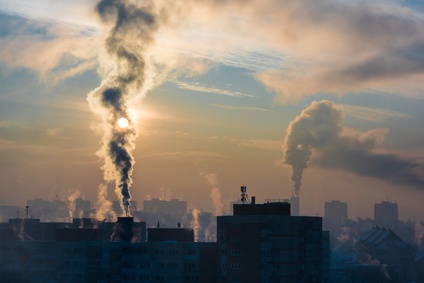Scope of Environmental Pollution as a Tort. In MC Mehta v. Kamal Nath the leading case in the history of environmental law pollution, it was observed that
“Pollution is a civil wrong. By its very nature, it is a tort committed against the community as a whole. A person, therefore, who is guilty of causing pollution has to pay damages for restoration of the environment and ecology… in addition to damages aforesaid, the person guilty of causing pollution can also be held liable to pay exemplary damages so that it may act as a deterrent for others not to cause pollution in any manner.”
Law of tort is a part of common law, based on judicial pronouncements. My work deals with the relation of environmental pollution with four torts :
1. Tort of nuisance
2. Trespass
3. Tort of negligence
4. Strict Liability
Discussing them in detail, we will come across a few cases, some important findings, etc.
1. Environmental Pollution and Tort of Nuisance
In general terms, nuisance means annoyance, inconvenience, irritant, etc. In Torts, nuisance means “unlawful interference with the use or enjoyment of land or property, or some right over, or in connection with it.” When we connect this with the environment, escape of water, smoke, fumes, gas, noise, heat, vibrations, etc. It can be the factors that cause a nuisance. In the case of Dhannalal v. Thakur Chittarsingh Mehtapsingh (1959) the MP Court held that noise can cause a nuisance. In Pakkle v. P. Aiyasami Ganapathi (1969) it was held that adding salt pans in the water tank rendered water useless causing pollution and it had no defense.
In Ram Rattan v. Munna Lal (1959) it was held that noise, when increased by a substantial amount, is capable of causing pollution and nuisance if it interferes with the ordinary comfort of a human. In V.Laksmipathy v. State of Karnataka (1992) it was observed that air, water, land and noise nuisance were hazardous, and the industries cannot be permitted to operate while causing air and noise pollution affecting the quality of the environment.
2. Environmental Pollution and Trespass
Entering into someone’s land or property without that person’s permission in trespass. It is a civil wrong where no injury is to be shown. Therefore, anything which enters into the environment knowing that it will cause harm is a trespass. In Arvidson v. Reynolds Metals Co.(1954) it was observed that aluminum which was being produced by the defendant’s plant caused air pollution as fluorides were being released in large quantities and affecting cattle.
However, the trespass theory is not sufficient to control air pollution.
3. Environment Pollution and Tort of Negligence:
Carelessness on somebody’s part or dereliction of duty by a person is called negligence. Tort establishes 4 essentials for negligence:
- There was a duty of the defendant
- This duty was towards the plaintiff
- This duty was a breach by the defendant
- This breach of duty caused damage to the plaintiff.
Humans carrying out huge industrial activities for their own benefit knowing that it is harmful is a negligent behavior towards the environment. In Mukesh Textile Mills (P) Ltd. V. H.R. Subramanya Sastry (1987) action was taking against negligence to prevent any activity causing environmental pollution. In Greyhound Corpn v. Blakely (1958) it was held that it is not necessary for the plaintiff to prove that injury has been suffered when a deadly pollutant is released under the exclusive control of the defendant. In Hagy v. Allied Chemical and Dye Corpn (1954), it was held that the plaintiff suffered injuries due to the smog spread by the defendant, therefore the latter was held liable.
Though dangers used by environmental pollution are often potential anger to evaluate the Court can help to determine such conditions.
4.Environment Pollution and Strict Liability and Absolute Liability:
Strict liability came into force after Rylands v. Fletcher. Though strict liability, which means, liability without fault on defendant, was being applied in many cases, it could not succeed that much in India.
For the circumstances which were taking place in India a new concept, absolute liability was introduced in the case of MC Mehta v. Union of India also known as Oleum Gas Leak case or Shriram Food Fertilizer case. A company engaged in harmful substances which if leaked may cause damage , the company will be held liable without any defense. The same was held in the case of Union Carbide Corpn. V. Union of India
CONCLUSION
The law of a nuisance for environmental pollution is a less effective measure because in case of public nuisance some injury is necessary to be proved. Apart from absolute liability, no other tort is much exercisable in India, and therefore people hesitate to resort to using of torts in their lives.
“Insurance against abnormally dangerous harm may be a proper remedy in deciding the questions of liability. Considering the pollution problem in its totality, interests of the public may considerably overshadow the interests of the parties concerned… he requires that the public int of view be searched out and decisions are taken in the light of social policy”- SC Shastri

